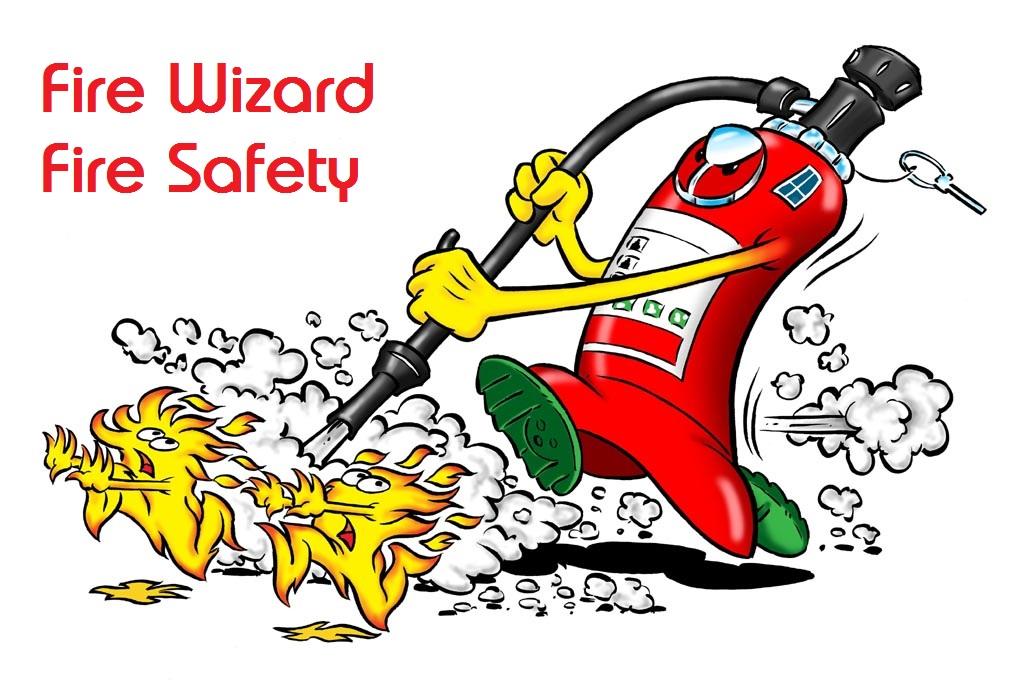-
Posts
2,564 -
Joined
-
Last visited
Everything posted by AnthonyB
-

FRAs in Existing & Purpose built blocks of flats
AnthonyB replied to Kevin99's topic in Fire Risk Assessments
https://www.local.gov.uk/sites/default/files/documents/fire-safety-purpose-built-04b.pdf -

Existing Dwellings protected stairway enclosure
AnthonyB replied to Kevin99's topic in Fire Risk Assessments
Not sure if you have already looked but this is pretty much the guide for existing flats https://www.local.gov.uk/sites/default/files/documents/fire-safety-purpose-built-04b.pdf -

Existing Dwellings protected stairway enclosure
AnthonyB replied to Kevin99's topic in Fire Risk Assessments
Normally windows don't have a fire safety role in the common areas of flats as smoke control is provided in other ways - so they aren't addressed by BS9991 or ADB as they aren't a fire safety feature. The openability of windows only becomes a concern when there are no openable vents, AOV's or smoke shafts. -

Existing Dwellings protected stairway enclosure
AnthonyB replied to Kevin99's topic in Fire Risk Assessments
In small existing older blocks of certain configurations openable windows can replace the automatic vents or openable vents that would normally be required for smoke control. -
Is this a suite within a larger building or a self contained premises - depending on size and layout you may not actually need anything to meet minimum legal requirements.
-
Most carts of this nature have a cheap ABC Powder extinguisher, usually around the 600g- 2kg size range. It's rather messy in use and a cleaner (but more expensive) alternate is the 1.4l Water Mist extinguisher. https://www.safelincs.co.uk/ultrafire-redline-1kg-abc-dry-powder-fire-extinguisher/ https://www.safelincs.co.uk/1-litre-water-mist-fire-extinguisher-ultrafire/
-
You need to commission a fire risk assessor to carry out a full FRA. However, based on the information the premises seem small enough in scope for the 'Do you have paying guests' guidance to apply which is more sympathetic than the standard Sleeping Premises guidance and allows the use of a Grade D residential smoke alarm system throughout instead. https://www.gov.uk/government/publications/do-you-have-paying-guests
-
You will be likely to be subject to Building Regulations and so your proposals and plans should go to Local Authority Building Control who will advise what you must do. In any case you need a Fire Risk Assessment. If you could upload a sketch plan of the layout I can give some pointers. Guidance sources: https://assets.publishing.service.gov.uk/government/uploads/system/uploads/attachment_data/file/422175/9449_Offices_and_Shops_v2.pdf https://assets.publishing.service.gov.uk/government/uploads/system/uploads/attachment_data/file/832633/Approved_Document_B__fire_safety__volume_2_-_2019_edition.pdf
-
I assume you mean the Gloria brand of fire extinguishers? What type and size is it as the markings vary. It's likely to be the manufacture month and year, although as you are supposed to be having them serviced every year it shouldn't be an issue if being done properly...however....it would be unusual to see an extinguisher this old (if not CO2) still in service if being correctly serviced unless you have a traditional fire protection firm that is taking the extinguishers out of the building every 5 years to discharge, internally inspect and refill rather than just replace with new.
-
These are all suitable (https://www.locksonline.co.uk/Fire-Rated-Mortice-Locks-For-Fire-Doors.html) as are digilocks. You can have certain holes in fire doors, otherwise you couldn't have letterboxes in fire doors (which you can). Rather odd they didn't comment on the other 7 unless llocated away from escape routes
-
If an existing operating premises and not a fit out in progress it's outside the jurisdiction of Building Control and is a matter controlled under the Fire Safety Order enforced by the Fire Service. Under this you, as the Responsible Person are required to determine your requirements by a Fire Risk Assessment, which as licensed premises should be written regardless of the number of employees. Fire Angel devices are for domestic premises only, although in certain circumstances may be mitigated in a Fire Risk Assessment if of the dual power supply type (mains and battery). The first requirement is for raising the alarm throughout the premises if someone discovers a fire - in really small premises this can be verbal (taking in to account background noise) if a shout could be clearly heard throughout the premises. If not then some form of enhanced warning is required - this would be an electrical fire alarm system to BS5839-1 Category M, comprising manual 'break glass' call points & alarm sounders linked via a control panel. You don't need automatic fire detection in most non sleeping premises unless the layout or risk requires it (or you choose to for property protection purposes which isn't a legal requirement) although in your case you my need some coverage - only a site visit as part of an FRA can determine this unless you have decent accurate floorplans.
-
Fire Warden training is a nice money maker for training companies, but there is nothing to stop the basic duties in an emergency being taught in house. With small numbers of staff a roll call may suffice as an alternative as it won't take too long (unlike normal situations where 10 minutes later names are still being checked off!)
-
Considering how many newsworthy fires in defective buildings, newsworthy critical defects uncovered and the general experience of the fire safety sector I wouldn't rely on an AI or BCO for fire safety advice - too much stuff gets signed off only later to be revealed to be substandard and need reworking at great expense.
-

Fire Risk Assessment Course/Certificate
AnthonyB replied to Uranio235's topic in Fire Risk Assessments
https://www.thefpa.co.uk/training/courses_detail.fire-risk-assessment-3-days.html -
That's just wrong, utterly wrong and a clear sign that the installation was not done by competent persons. Some fire alarm systems, due to the load on them and the required standby time, do need additional battery capacity outside that contained in the alarm panel, but there are purpose built Power Supply Units with internal charger for this purpose (e.g. https://www.safelincs.co.uk/24vdc-en54-4-approved-power-supply-units/). You can add photos as an attachment on this forum, it would be interesting to see what it looks like!
-
You don't have to be an electrician to do the 3 hour test, just competent and know what to do. Nothing in law says it has to be.
-
Damaging labels is why it's preferred to put the seals in the frame and not the door, solves your problem - fire door frames often have the channels pre-cut.
-

Flat fire door for private entrance
AnthonyB replied to Nibarb's topic in Fire Doors and Accessories
If the doors are onto an enclosed common escape route the simple answer is sadly no. The doors are allowed to have a gap of 3-4mm rather than being really tight up. -
You don't have to be an electrician to do the 3 hour test, just competent and know what to do. Nothing in law says it has to be.
-
No, not if fitted properly - this is why a competent fire door contractor should be carrying out these works, I've seen thousands of pounds of wasted work on doors by well meaning joiners.
-

Fire curtains or fire shutter for Kitchen hatch
AnthonyB replied to DawnBFS's topic in Fire Safety in Village Halls
Roller shutter is easier as you've got the runners installed, check out your existing one, it may actually already be fire rated! Sounds a bit OTT though. -
I have to say I think your landlord has lost touch with reality and is using H&S as an excuse for you to not do it. Easiest way for you to solve it is to get your local fire service's Community Safety Team to carry out one of their free home safety visit and mention it then - they will back you up in this.
-
If it comes from abroad via their warehouse and not direct to you then the loophole doesn't apply, it should comply....
-
A fire strategy is usually created at the design stage of a building - it demonstrates how the design will comply with the Building Regulations and is particularly important if the architect plans a building where a departure from the 'standard' guidance of Approved Document B is required to allow the design to be viable as it will detail the engineered solution used to meet Building Regulations functional requirements. It then accompanies the building through it's life so the various building owners/users are aware of what has been done in order to correctly maintain it and ensure any limits set are not exceeded. The strategy evolves with the building too, being updated as alterations and refurbishments occur. The Fire Risk Assessment is required for all existing premises other than inside private dwellings under specific fire legislation other than building regulations and is intended to reduce the risks to relevant persons on the premises (which is essentially anyone other than firefighters on site if the premises is on fire) by preventing fire through eliminating or controlling the presence of combustibles and ignition sources, mitigating the effects of fire by containing it via fire resisting structure and doors or extinguishing/controlling it with fixed or portable fire fighting systems and by ensuring persons can escape via fire detection & warning systems, sufficient escape routes with adequate protection and lighting and that there are suitable procedures, training and nominated persons to ensure the right thing is done. The risk assessment would refer to the fire strategy (if there is one) as part of the assessment process. Design fire strategies, unless straightforward, are usually beyond the skills of the architect and so Chartered Fire Engineers usually prepare them. Building Control or the Approved Inspector are the ones checking that the Building Regulations are broadly being met and would vet the strategy not write it.
-
Seems sensible, the landlord should have had more oversight on this in the first place so relevant fire safety works could have been costed in (or indeed the boiler not be allowed in the common parts and the tenant made to put it in their flat)

